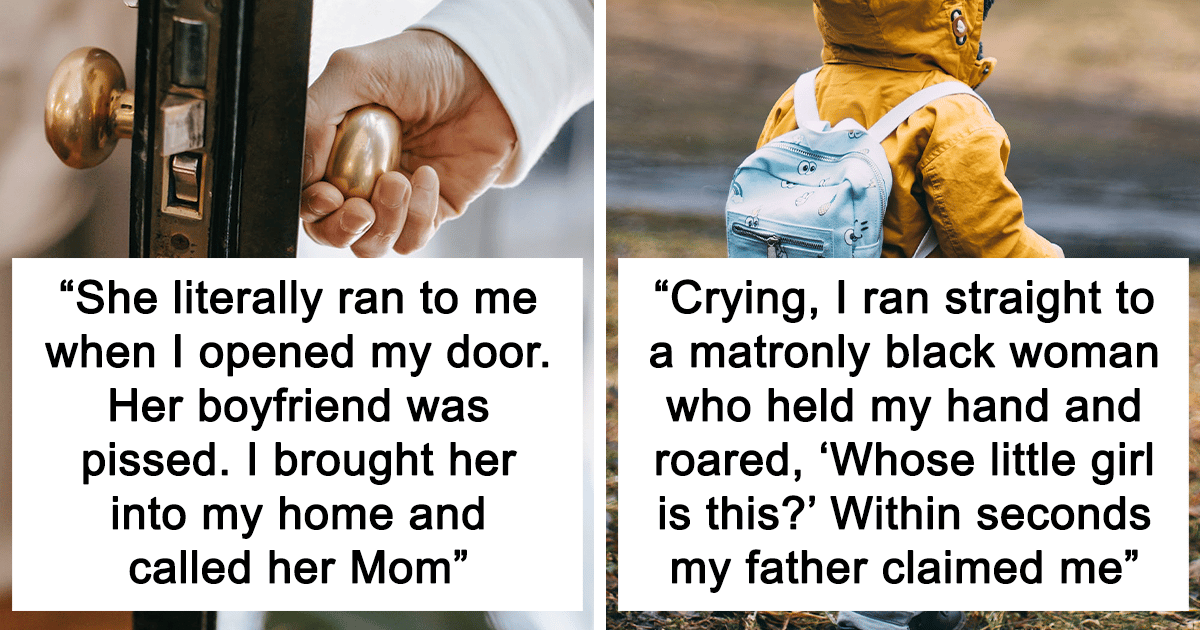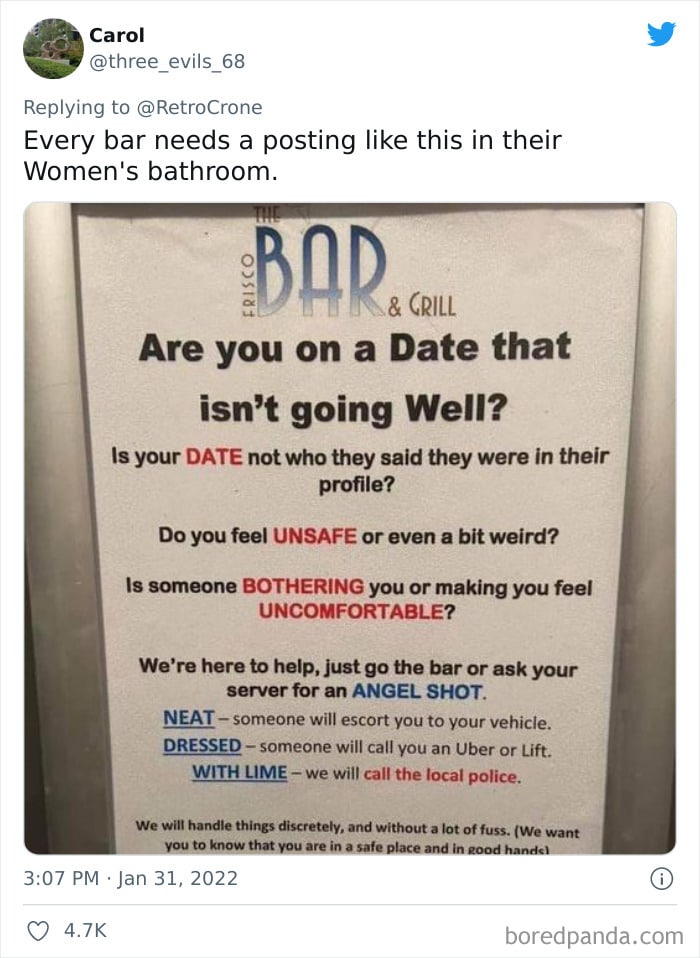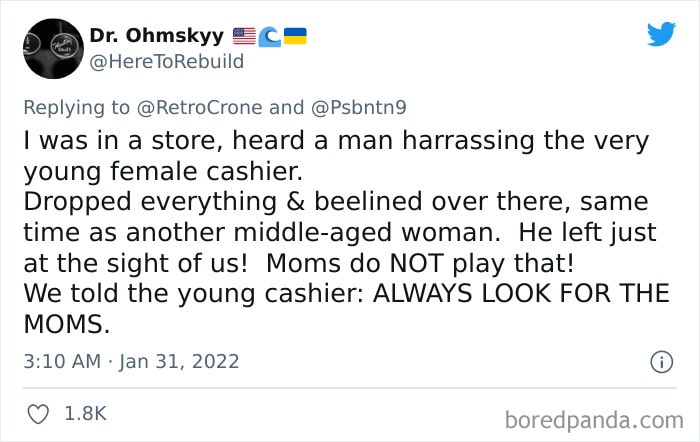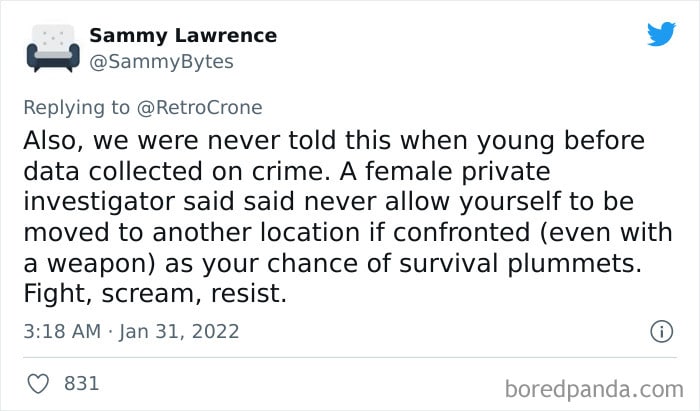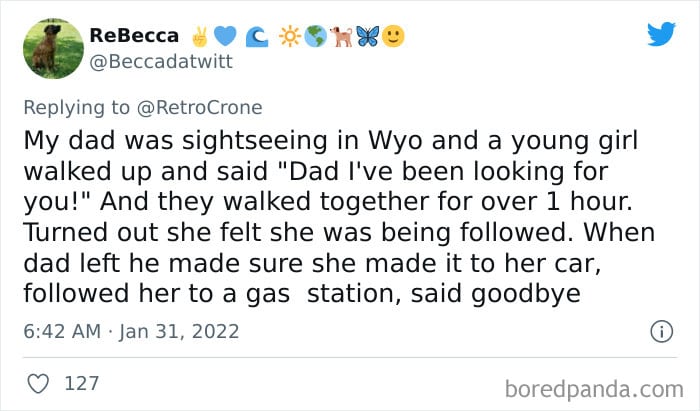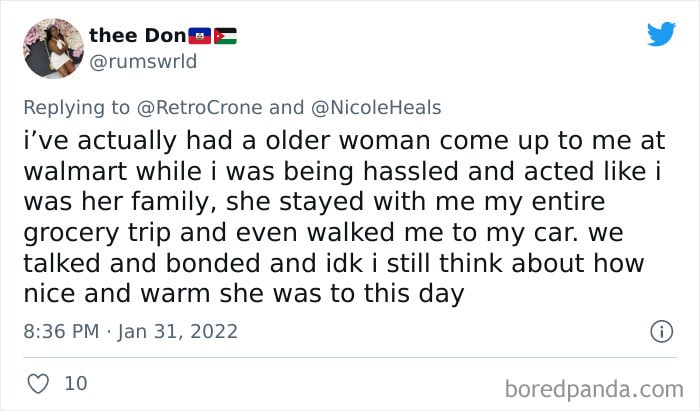Women are constantly concerned about their safety, therefore, they go the extra mile and do everything they can to help each other. Some women took to Twitter to post safety recommendations and tips that they’ve tried and tested over the years to keep anybody safe if they’re being followed or harassed by a stranger. RetroCrone was the original poster of the viral thread. She presented a fantastic idea to young females in unsafe situations, encouraging them to approach older ladies and say, “Mom! A strange guy is hassling me. He won’t leave me alone.”
Scroll down for the best safety tips, as presented by these women. And if you know something that you know for a fact might help protect someone from a hassler, harasser, or stalker, share your thoughts in the comments.
Emily May, the Co-Founder and Executive Director of ‘Right To Be,’ explained to us how widespread harassment is and how to respond to it. ‘Right To Be’ is a nonprofit that works to end harassment in all of its forms and trains people to respond to, intervene in, and heal from harassment.

#1

Emily, told us that L’Oreal Paris and IPSOS recently did some research to determine how widespread harassment is as part of ‘Right To Be’s’ Stand Up Against Street Harassment campaign.
The Co-Founder and Executive Director of ‘Right To Be’ said: “The 2021 study showed 80% of women have experienced street harassment.”
“We’re working with L’Oreal Paris to train 1 million people in bystander intervention to address street harassment. People can sign up for free training on our website,” she shared. This is something that you should seriously consider doing.
#2

#3

According to Emily, asking for strangers, e.g. older women, for help is “a great option.” People in public places can help if someone is following you.
“Our Stand Up Against Street Harassment Training offers three strategies to use in response to harassment: assess your safety, reclaim your space (optional), and practice resilience. Proven ways to reclaim your space include setting a boundary, asking someone for help, or documenting your harassment,” she explained to us.
#4

#5

#6

Emily from ‘Right To Be’ stressed that it is vital to remember that it is not your fault if you were harassed or stalked by a stranger.
“There is no such thing as a perfect response to harassment, it’s their responsibility not to harass you. Taking time to find a sense of safety inside yourself, educate yourself about the issue, share your story, and learn how to intervene on behalf of others are all key parts of the healing journey,” she shared how some victims approach healing after being harassed.
#7

#8
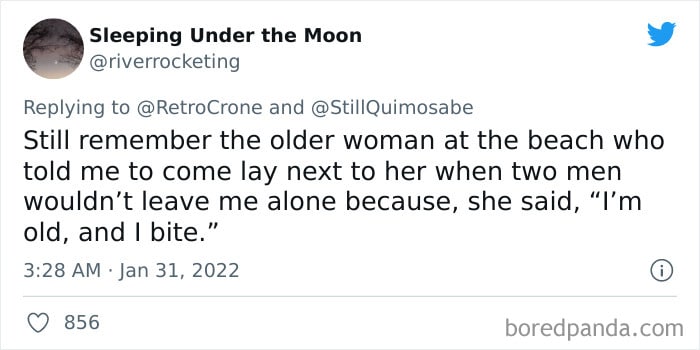
#9
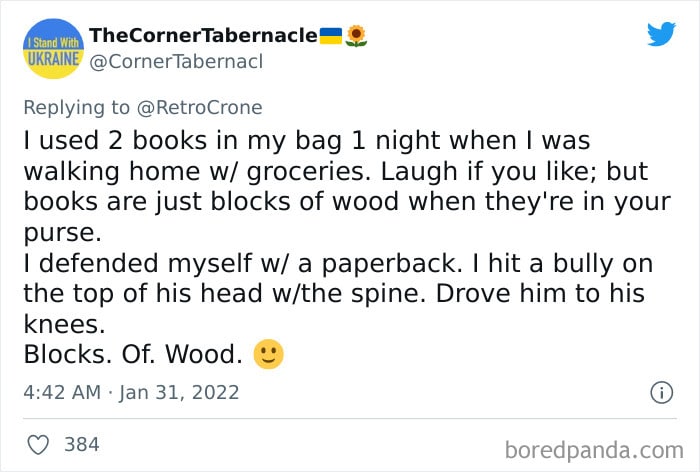
Emily, the Co-Founder and Executive Director of ‘Right To Be’ (previously ‘Hollaback!’) shared with us sometime earlier that parents need to take the time to speak to their children about harassment. It’s a difficult topic, but an important one to tackle. Kids need to know what they might be up against in the future.
“Most parents know they need to talk to their kids about puberty before it happens, but few take the time to talk to their kids about harassment, even though almost half will be harassed by older men by the time they turn 12,” Emily warned.
“We need to equip young people with resources including: what harassment is, what it looks like, how prevalent it is, why it isn’t ok—and most importantly, that it’s never their fault,” Emily from ‘Hollaback!’ explained to us.
#10

#11
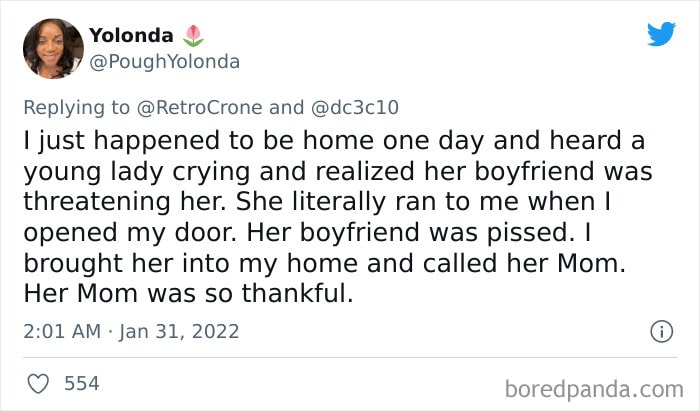
#12

Unfortunately, most young women who have been the victims of harassment blame themselves for what happened. They’re then more hesitant to speak about what happened with their parents. They’re scared that their loved ones might blame them for what happened. Emily, the Co-Founder of ‘Hollaback!’ said that they’re scared that their relatives will ask them questions like: “Why were you wearing that?” or, “Why did you take that route?”
“In the same way we tell our teenage kids that if they get drunk and don’t feel safe driving home we will pick them up from wherever they are, no questions asked—we also need to tell our kids that if someone harasses them we will never, ever blame them for it or punish them for it,” she gave an analogy.
“This is important for creating a safe space so that they have a trusted adult they can process these experiences with.”
#13

#14
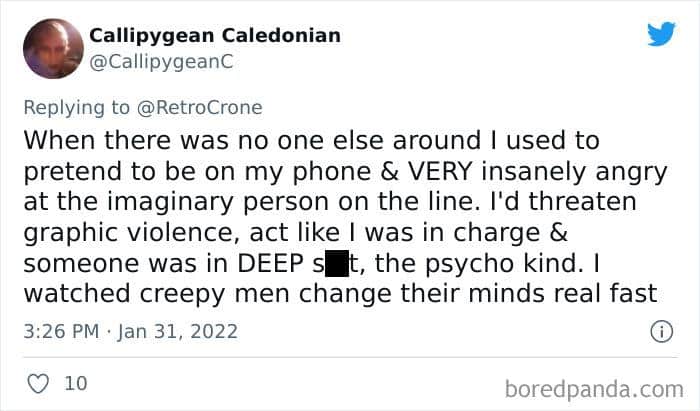
According to Emily, some victims of harassment never end up regaining their sense of security after the horrible things they went through. However, in some cases, the community can be a vital part of helping women feel safer in their local area.
#15

#16
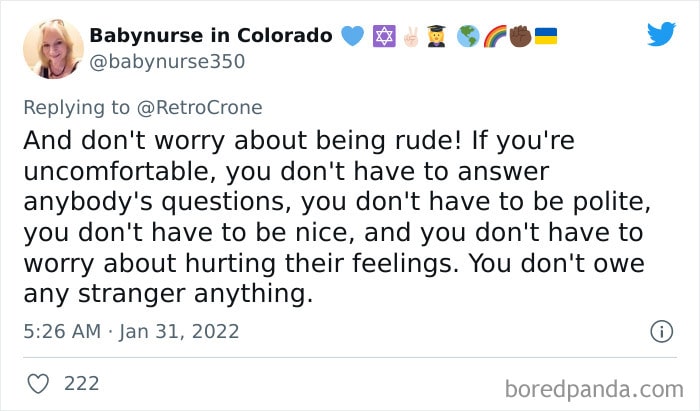
#17

#18

“One thing that can help you build a sense of safety, however, is community. Take the time to get to know the good folks in your neighborhood and build positive relationships with not just your neighbors, but the people who deliver the mail, the trash folks, the guy that mows your neighbor’s lawn, etc.,” she pointed out that there are a lot of people in the community who could help someone feel much safer.
#19

#20
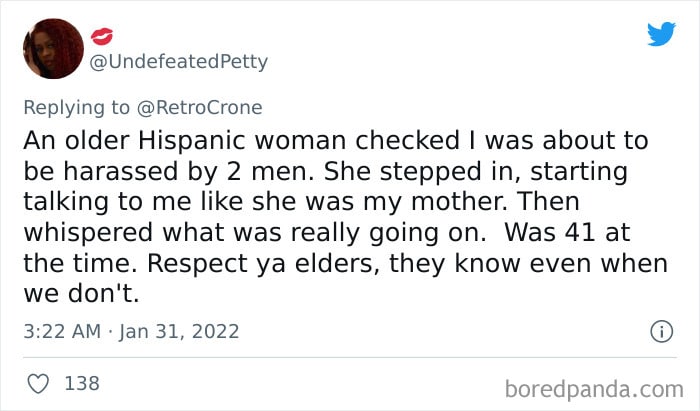
#21
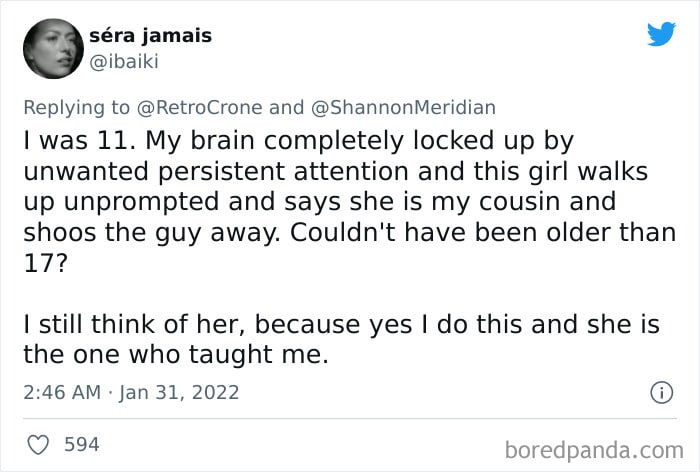
“The more people you know, the more people will have your back if something happens again. Knowing this can increase your sense of safety and belonging in your community,” she explained that safety can come from knowing more members of the community.
#22
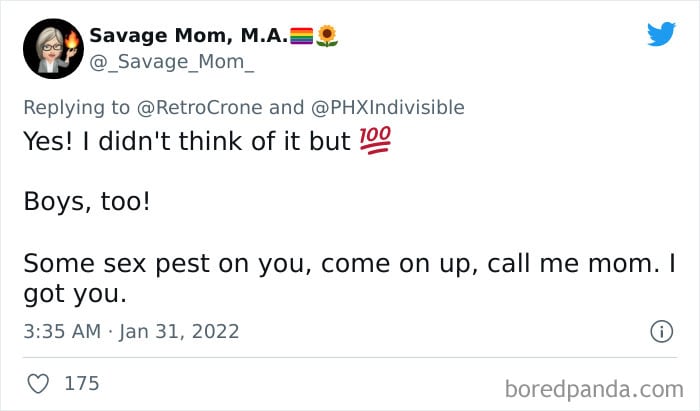
#23

#24

Psychologist and wellbeing consultant Lee Chambers told us that human beings have a desire for certainty and routine that keeps us feeling safe and able to make plans for the future.
“When unpredictable situations or accidents impact us, it can be traumatic, and we will likely feel a sense of disappointment, frustration, and loss,” he explained to us.
#25
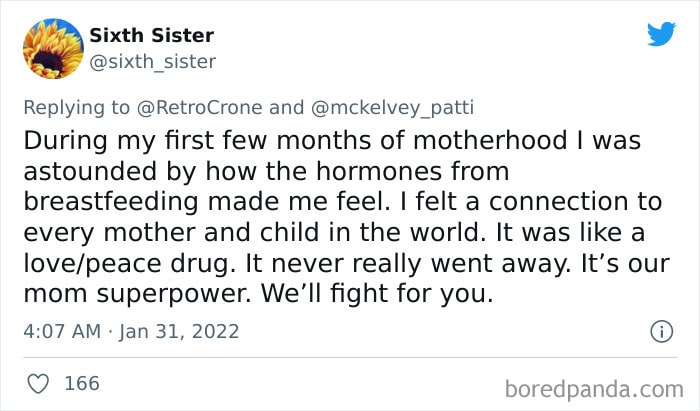
#26

#27
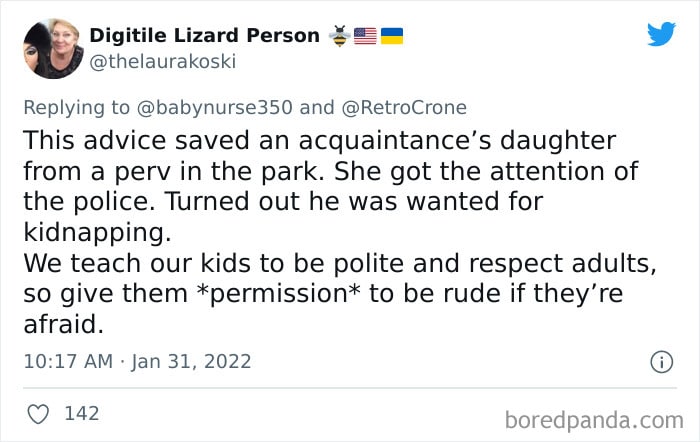
“It is important however that we embrace the fact that the world can be unpredictable and uncertain, and become more tolerant of this being a reality. Understanding that things are sometimes out of our control helps us to accept that not everything goes to plan, and accept when things happen to us that are negative. This acceptance allows us to embrace the change and difference, and manage our expectations so we can become more resilient to the ups and downs that all our lives lead,” the psychologist spoke about all kinds of situations that we’re not prepared for.
#28

#29
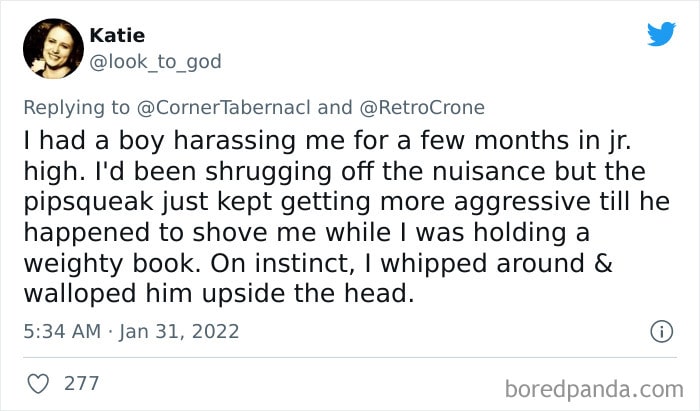
#30
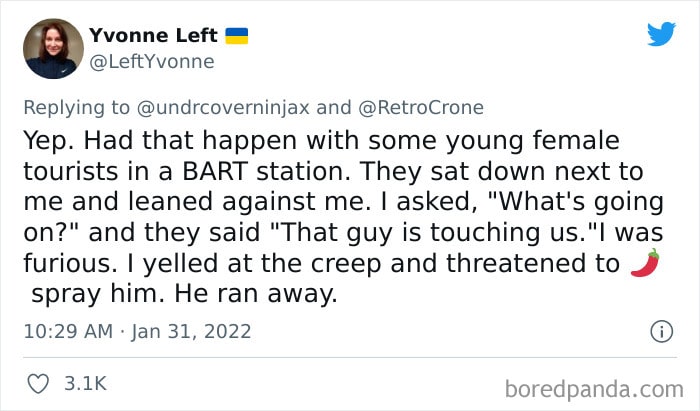
“Post-traumatic growth isn’t always simple to explain or utilize, but often the adversity we face can create a precedent for what we can overcome, help us to see what we need to be grateful for, and give us an understanding of the support we do have. A big part of opening the door to grow from our struggles is finding acceptance and taking ownership over what you can control and finding healthy ways to express the negative emotion that comes with challenges that test us,” Lee said.
#31

#32

#33

#34
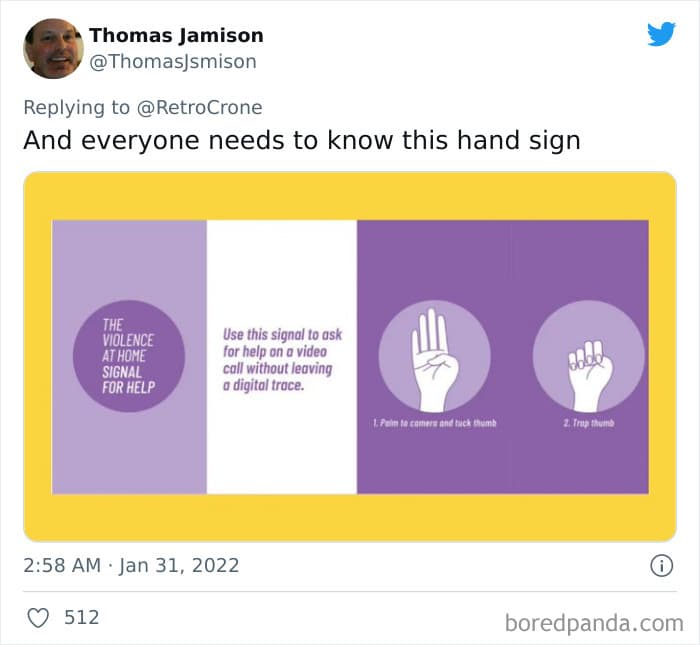
#35



